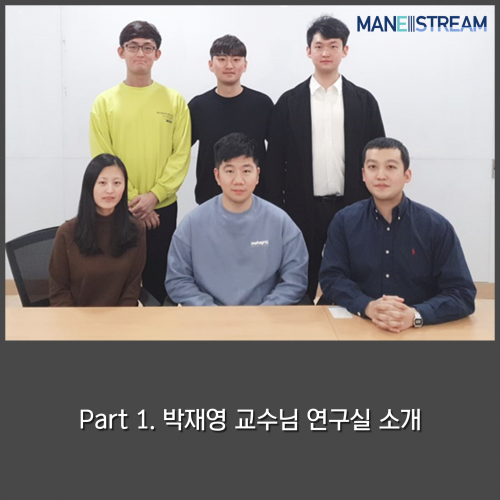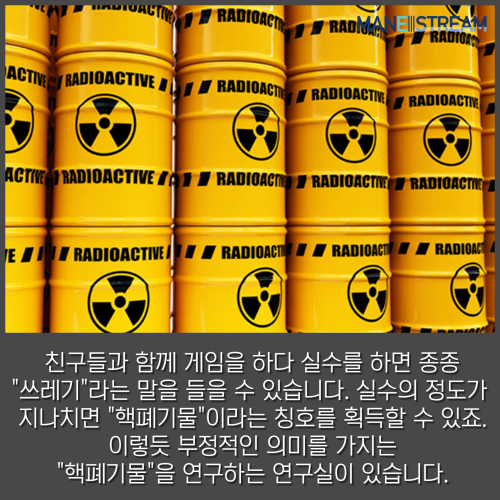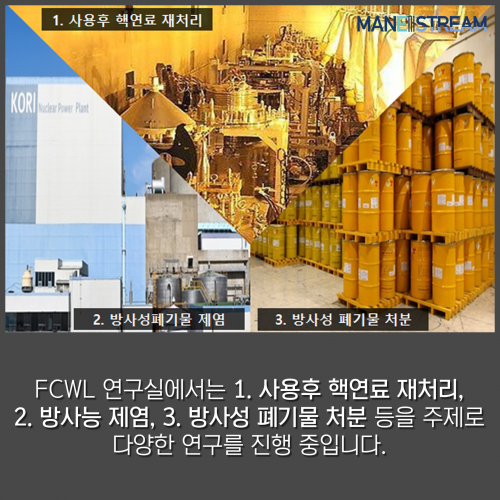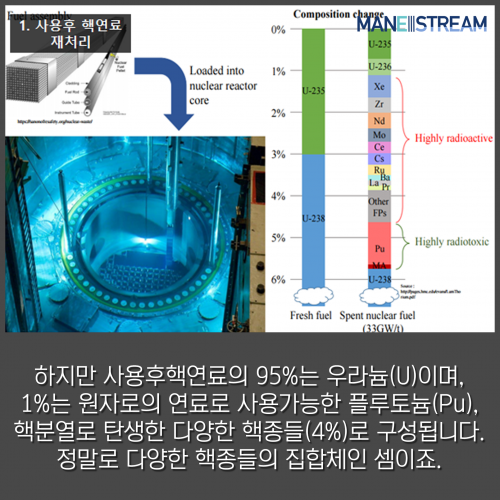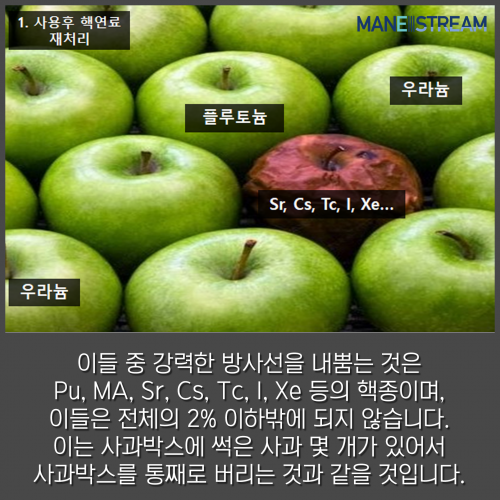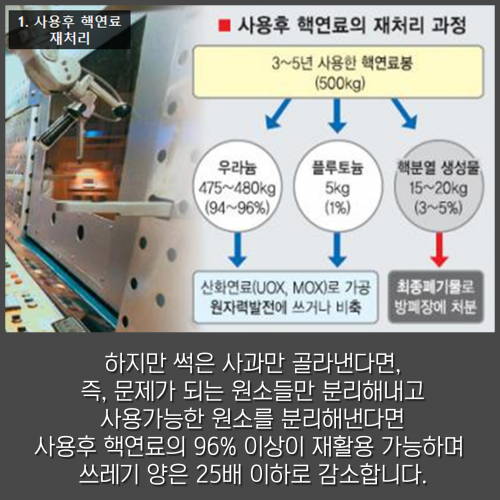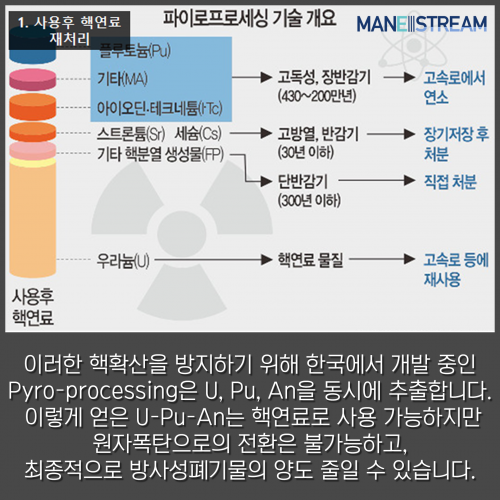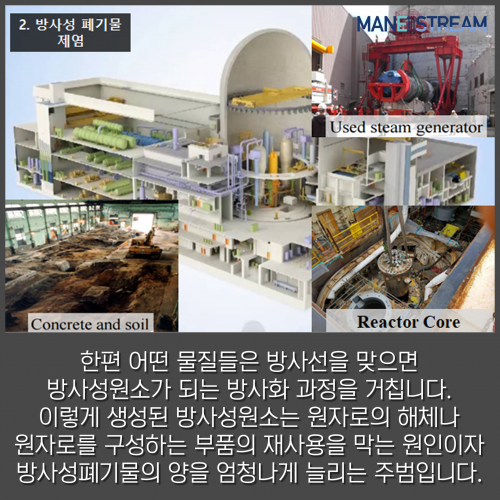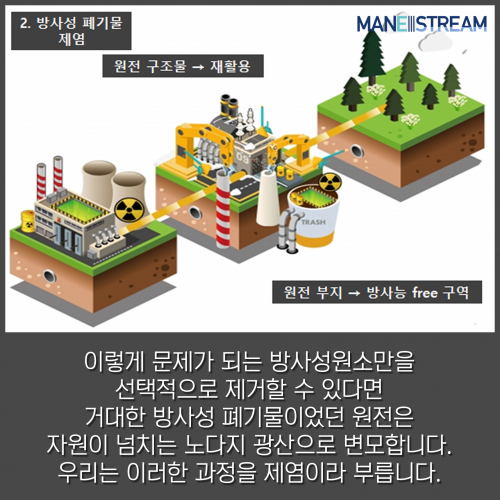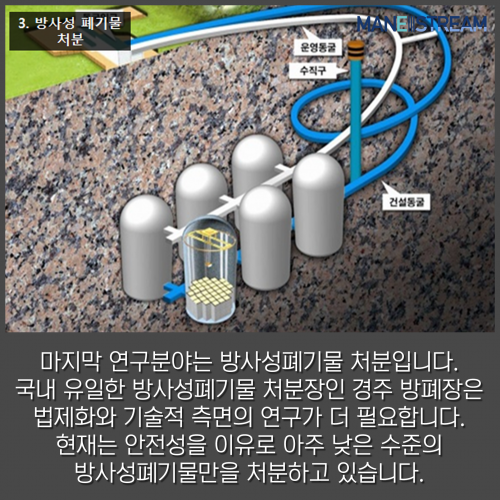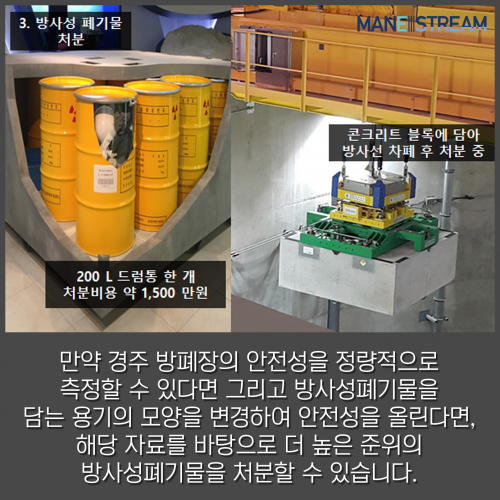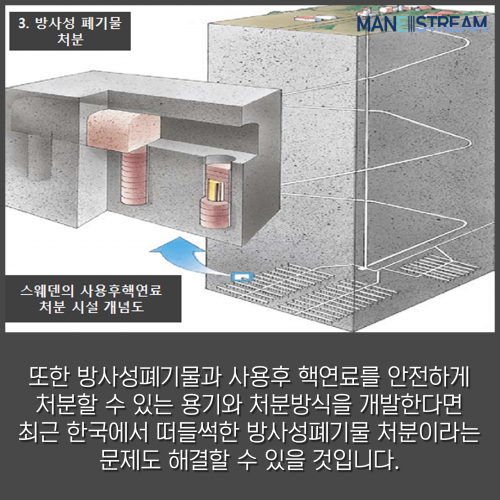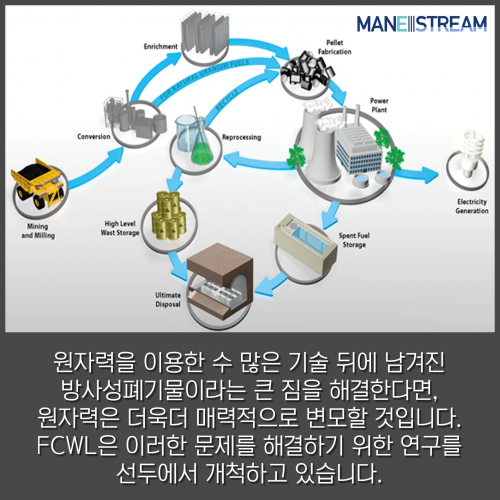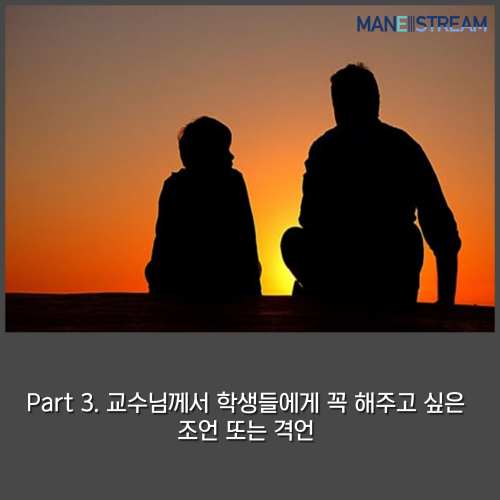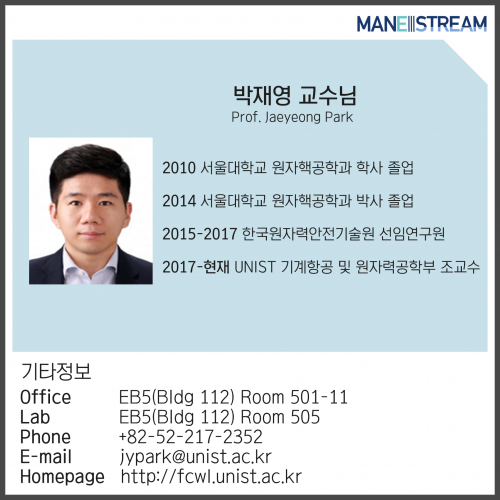“SNF Management and Treatment to Minimize Future Burden” :
Spent nuclear fuel has been safely and successfully managed for the past several decades, but various issues on long-term management and permanent disposal have been raised, because SNF contains various radionuclides generating high heat (e.g., Sr-90 and Cs-137) and alpha radiation (e.g., Pu-239 and Am-241). In addition, the issues are associated with knotty problems, both scientific and societal. To resolve and mitigate these issues, an innovative method to diminish the volume and radioactivity of the final waste disposed of at permanent repositories is necessary. Recycling processes (e.g., pyroprocessing) and advanced reactors (e.g., fast reactors) to recover and burn up radionuclides could be breakthroughs for long-term SNF management. Thus, we want to research the development of a recycling process based on molten salt technology as well as the management of radioactive waste produced from recycling processes. Our short-term research objectives are as follows:
- Building of a transient multi-physics multi-element computational model for electrochemical processes of pyroprocessing: the model will be utilized to evaluate decontamination factors and product quality and optimize the operating conditions and geometry of the electrochemical processes.
- Investigation of the electrochemical behaviors and material properties of molten salts: electrochemical (e.g., cyclic voltammetry, impedance spectroscopy, chronopotentiometry) and laser spectroscopy will be utilized to identify reduction and oxidation behaviors, reaction constants, transfer coefficients, redox potentials, etc.
We will establish a hot laboratory handling depleted uranium and radionuclides where research on the following topics on SNF management and recycling will be carried out in the future:
- Expansion of the computational model to multi-phase electrochemical processes of pyroprocessing: electrochemical reactions occurring at the interface between molten salt and liquid metal will be simulated, considering element behaviors in each medium.
- Development of recycling processes for U-TRU-Zr metallic fuel of a sodium fast reactor based on pyroprocessing: lab-scale electrorefining experiments with U-Zr alloys will be followed by an investigation of electrochemical behaviors of molten salts.
- Development of pyroprocessing byproduct treatment and management methods: the environmental effect of byproduct disposal will be evaluated, and further recovery processes for the key nuclides will be developed.
“Radioactive Waste Treatment and Management to Meet Regulatory Requirements” :
Radioactive waste should be managed safely throughout the lifecycle from generation up to permanent disposal. Various sorts of radioactive waste are generated from nuclear facilities, and each type requires different treatment and management because of its particular characteristics. It should also be considered whether the treatment and management method will facilitate permanent disposal. To manage radioactive waste throughout its lifecycle, it is vital to determine the radionuclide inventory and application of durable waste forms suitable for the disposal. In addition, it is necessary to develop a further decontamination and recycling process for radioactive waste to reduce radioactive waste volume and operate the radioactive waste repository effectively. Therefore, following topics will be carried out in the short term:
- Development of an optimized scaling factor derivation and verification method to estimate radionuclide concentrations precisely: scaling factor methods of other countries will be compared and evaluated statistically, and a new scaling factor method will be suggested.
- Investigation of the disposal acceptability criteria on solidified radioactive waste: the current test methods and acceptance criteria will be reviewed to determine whether they are suitable for the disposal facility, and new methods and criteria will be suggested.
We plan to set up a hot laboratory handling depleted uranium and radionuclides where research on the following topics on radioactive waste will be performed in the future:
- Assessment of the disposal suitability of solidified radioactive waste: radiation and heat effects on waste characteristics during solidification and solidified waste acceptability tests (e.g., leachability and mechanical strength after thermal cycle, irradiation, and immersion) will be evaluated.
- Development of durable waste forms suitable for intermediate-level waste disposal, such as spent resin, liquid solution, and other waste that could be generated from fuel cycle facilities.
- Development of decontamination and recycling processes for metallic waste (e.g., pressure tube and calandria tube of CANDU reactor, steam generator, etc.) by combining volumetric and surface decontamination processes.
“Decommissioning of NPPs with Minimal Environmental Impact” :
Decommissioning is the final phase of the NPP lifecycle during which large plant equipment, structures, and buildings are dismantled. In addition, secondary radioactive waste is also produced while decontaminating structural materials, equipment, and buildings. Characteristics of these types of radioactive waste (e.g., volume, radionuclide inventory, and detergent chemicals) differ from those of radioactive waste produced during normal operation. Therefore, a specified decontamination technology suitable for the decommissioning of radioactive waste management facilities must be developed. An accurate and efficient radiological survey and evaluation method for decommissioned sites must also be developed. The radiological survey is conducted to identify whether the residual radioactivity of the site meets the site release criteria. Thus, I plan to conduct research on the following topics related to the decommissioning of solid radioactive waste management sites and residual radioactivity surveys for decommissioned sites:
- Investigation of disposal- and recycling-related characteristics of radioactive structural materials and equipment generated during decommissioning (e.g., tanks used to contain highly radioactive waste and equipment used to treat radioactive waste): radionuclide inventory and radiological, chemical, and physical properties will be evaluated.
- Development of efficient decontamination and recycling processes for bulky metallic radioactive waste produced during dismantling: technology to decontaminate radioactive waste below clearance level will be developed.

